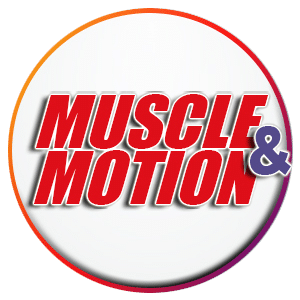Whether you’re new to the gym or an experienced trainee, squats should be a part of your exercise routine.
From dumbbell squats to single-leg variations, there is a wide variety of different squat exercises you can do.
This Muscle and Motion guide will provide all the information you need to learn how to start squatting properly and effectively today!
What are the advantages of performing squats?
If you ask any personal trainer for their top five recommended exercises, squats will likely be among them!
Squats are not only one of the most effective exercises, they can also be much more functional than you think!
Every time you rise from a seated position, whether it’s in your home, your car, or any other situation, you are essentially performing a squat. Of course, squats have benefits that extend beyond improving Activity of Daily Living (ADL).
Squats variations are widely incorporated into professional athlete programs to improve leg strength and achieve different goals:
- Want to jump higher? Try the Squat Jump
- Want to improve hip mobility? Try the Cossack Squat
- Want to challenge single leg balance? Try the Pistol Squat
Learn the anatomy of the working muscles during squats
The squat – a multi-joint exercise that engages multiple muscle groups simultaneously!
- Quadriceps femoris – primary knee extensor
- Gluteus maximus – primary hip extensor
- Hamstrings – assist in hip extension
- Gluteus medius & minimus – stabilize the hip and pelvis
- Gastrocnemius & soleus – plantar flex the ankle
- Erector spinae – stabilize the spine
- Core muscles – maintain intra-abdominal pressure
How to squat properly: step-by-step
- Stand with your feet a little wider than shoulder-width, toes pointed slightly outward, and a barbell on the upper part of your shoulder blades.
- Bend your knees to about 90 degrees (or lower, as long as the heels don’t disconnect from the ground)
- Push yourself back up to the starting position.
- Keep your back straight and chest elevated at all times.
How to grip the floor when you squat
Before performing a squat or any other leg exercise, we must create a stable base from the foot through the hip muscles and up to the core muscles. A stable base will balance the load on all the joints and bones.
The principal is to statically activate the foot muscles in order to maintain the arch of the foot. At the same time, it activates the hip rotators by rotating the hip outward in order to stabilize the knee and the hip and also to contact the core muscles.
These muscles work together and form a stable base for leg exercises.
You can perform two actions that can activate all of the relevant muscles:
- Press the big toe down into the floor.
- Rotate the hip externally. Drive your knee outward and, at the same time, push the legs to the side as if you want to separate them.
Check out our video for more information about gripping the ground when squatting.
How do I know if I’m squatting correctly?
You can consult a personal trainer or fitness professional in your local gym to ensure that you are squatting correctly.
They can watch your form and provide feedback and tips on improving your technique.
You can always go to our Strength Training app and get immediate information about how your squat should look and which common mistakes to avoid. Then use a mirror or a friend and improve your squat technique immediately!
Once you’ve mastered your squat technique, here is a great warm-up routine before you start heavier squats.
Common squatting problems:
-
Lack of ankle mobility
One of the common problems with squatting performance is restricted ankle dorsiflexion.
As a result of this restriction, the body falls backward, or the trainee compensates by leaning forward.
To fix this problem, use exercises that help to improve your ankle dorsiflexion range of motion, such as Knee To Wall Ankle Mobility Drill.
To learn more about ankle mobility in squatting, check out this video, click here.
-
Knee collapse
Knee valgus collapse, also known as “knock-knees,” describes the inward collapse of the knees while performing a squat.
There are many reasons for this type of compensation, such as lack of muscle balance, muscle weakness, femoral anteversion, or restriction in range of motion.
You can learn more about knee valgus collapse during squats in this video. Click here.
*Another cause for knee valgus during a squat is foot pronation.
Written by Uriah Turkel, Physical Therapist and Content Creator at Muscle and Motion.
Incorporating the Strength Training App into your fitness journey will take your workouts to the next level.
Download now from any device and sign up for free to try and experience the effectiveness of training smarter and better!


